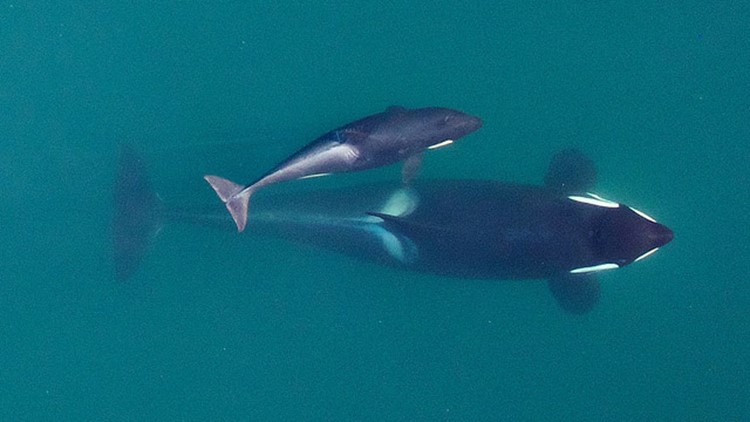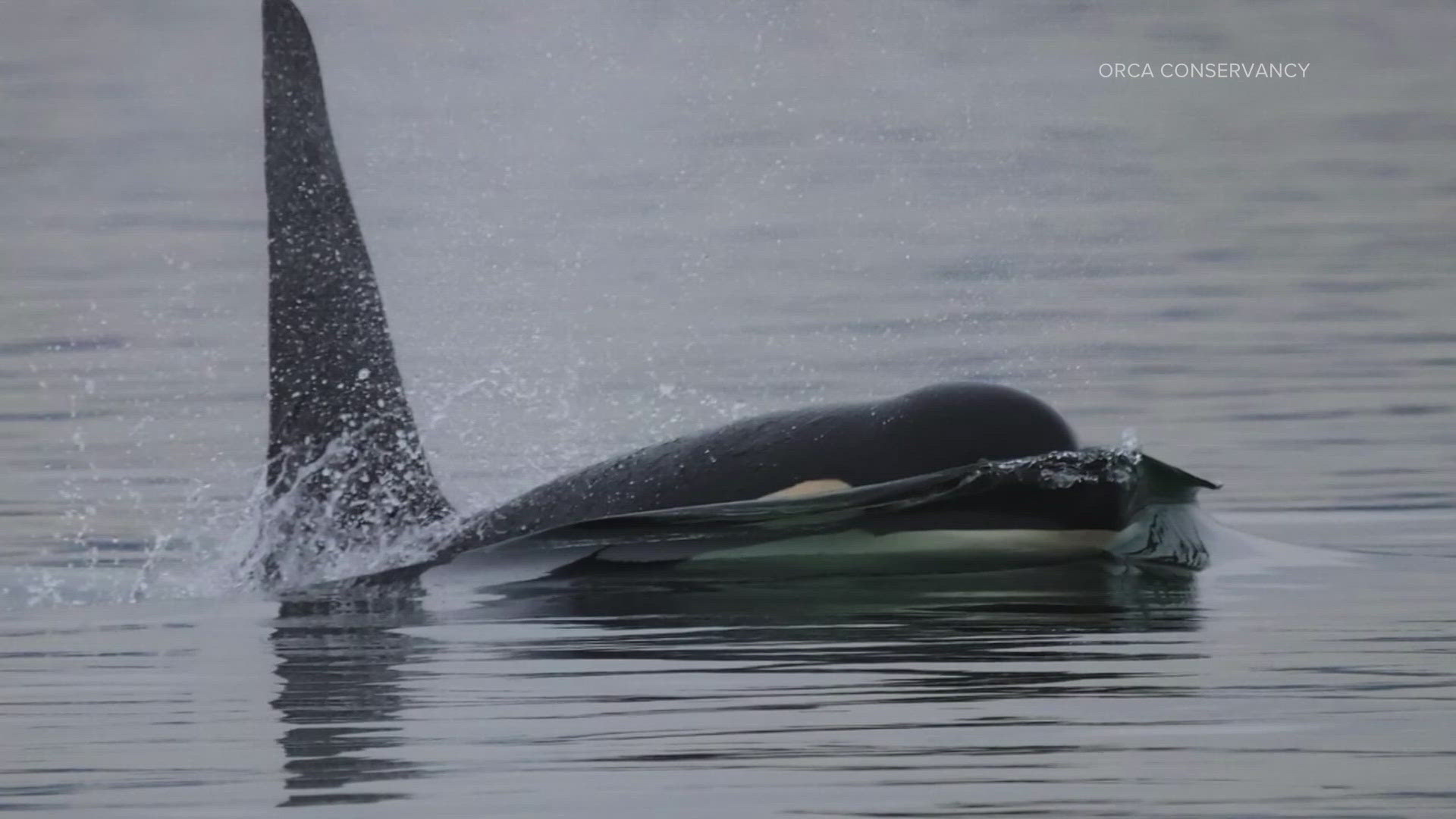Scientists from the United States and Canada are transcending borders in an attempt to save one of the endangered Southern Resident orcas. J-50, a four-year-old female orca, is sick and rapidly deteriorating. Experts worry that she may not have long to live.
J-50, or Scarlet, has always been on the small side for an orca. Last year, researchers who use drone photography to study the Southern Resident orcas noticed that she was getting thinner.
In recent weeks, she’s worsened at an alarming rate. Scientists estimate that she’s lost about 20 percent of her body mass. She’s also developed a condition called “peanut head”—a depression at the base of her skull indicating severe fat loss.
As Scarlet continues to lose fat, her condition may worsen, worries Deborah Giles. Giles is a biologist with the University of Washington Center for Conservation Biology and has been studying the Southern Resident orcas for 13 years.
Many of the toxins the orcas are exposed to are lipophilic, meaning they get captured by and stored in fat in the body. Extreme loss of body fat means these toxins are released into the body, compounding the health problems already present. A white spot that has appeared behind Scarlet’s blowhole may indicate the development of an infection or other problem with her lungs.
“Respiratory illnesses are a common cause of morbidity or illness in marine mammals,” explained Linda Rhodes, a research microbiologist at the Northwest Fisheries Science Center.
With such a valuable member of the pod—a young female—in trouble, the federal government and local organizations are moving quickly to act. The J pod was last seen heading west in the Straits of Juan de Fuca, but scientists are preparing to intercept them as soon as they come back into range. Researchers will attempt non-invasive testing methods to try to determine the source of Scarlet’s illness, including sampling her breath and feces.
Rhodes will analyze Scarlet’s breath samples, trying to identify specific pathogens - disease-causing microbes like bacteria or fungi. Giles works with a Conservation Canine, or C-K9, to locate fecal matter floating on the surface of the water. When the dog signals, the boat swiftly swoops in to collect the sample. From the hormones in the fecal matter, Giles and her team can determine how much stress the whale is under and how malnourished she is.
If the researchers can find a dominant pathogen, marine mammal experts and veterinarians will be able to determine how to treat it. They are working with the Lummi Nation to prepare medicated salmon that they will try to coax Scarlet to eat.
Such an intervention is unprecedented. For scientists to consider taking such drastic steps towards saving Scarlet proves the severity of the situation, said Giles.
“She’s in worse shape than any animal we’ve ever seen that’s survived,” she said. “But she’s always been incredibly spunky. She still has a will to live.”
The multi-disciplinary team has a phone call scheduled for Monday where they hope to decide the next step in their course of action. Rhodes is confident they will make the right choice.
“I think you’ve got the best people in the world working on it out there,” she said.
For more guidance, some are looking to the rescue of A-73, better known as Springer. Springer was a juvenile Northern Resident orca when she was separated from her pod in 2002 and discovered, emaciated and alone, near the docks of the Vashon Ferry.
After months of debate over the correct course of action, Springer was captured and moved to a sea pen where she could be medically examined. She was successfully rehabilitated and reunited with her pod—the only example of a successful reintegration of a cetacean into a wild population.
Donna Sandstrom, an orca activist who worked closely with the Springer release, calls that mission an unqualified success. She’s optimistic for Scarlet, too.
“We learned how to work together as humans,” said Sandstrom. “And that’s what gives me hope.”
The way Michael Harris, another well-known local wildlife activist, sees it, Scarlet has an advantage over Springer. While Springer was alone, Scarlet is still connected with her pod. In fact, scientists have observed her family bringing her fish and trying to feed her.
“She’s got the best mama in the Southern Residents,” said Harris. “That’s a start.”



